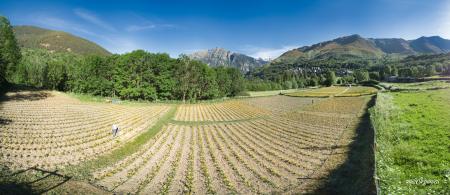
Objective:
The production of medicinal and aromatic plants (MAPs) from wild collection or by cultivation raises environmental, social and economic issues. The demand for a wide variety of wild species is increasing with the growth of human needs and trade. There is an awareness that many wild plants are being overexploited, which many experts recommend incorporating into cropping systems, but several aspects that determine their viability have to be taken into account. An alternative is small-scale cultivation.
Context:
The trade of cultivated medicinal and aromatic plants do not exceed 1% of the total number of species used worldwide. Meanwhile, wild harvesting completes these crops providing rare species and being an important source of industrial raw material. High extraction in a particular area or of a specific species can lead to the disappearance of resources. Domestication and cultivation have certain advantages: 1. reliable botanical identification, 2. continuity of supply, 3. purchase agreements and long term contracts with clients, 4. selection of genotypes, 5. process control, 6. quality control and standards, and 7. certification.
Contacts:
Eva Moré, eva.more@ctfc.cat, http://apsb.ctfc.cat
Further information:
Etat des lieux et perspectives des débouchés des petits producteurs de PPAM – GAAP – PAPDD 2015/2016 file:///C:/Users/eva.more/Downloads/rapport_-_gaap_agro-_plantes_a_parfum_-_2016.pdf
La cueillette a le vent en poupe. Le paysan d'Auvergne. Septembre 2012. file:///C:/Users/eva.more/Downloads/1-article_cueillette_journal_paysan_ayvergne.pdf
Les cueilleurs en chasse d'un meilleur statut. Humanité Quotidien, 27 Janvier 2011. file:///C:/Users/eva.more/Downloads/les_cueilleurs_en_chasse_docoun_meilleur_statut.pdf
Sandrine Boucher. Profession: cueilleur. Les 4 saisons 205 file:///C:/Users/eva.more/Downloads/cueilleurs-sandrine-boucher.pdf
Des plantes médicinales en pleine croissance. Plantes & Santé, nº 128. Octobre 2012. https://www.plantes-et-sante.fr/articles/on-en-parle/1993-les-plantes-medicinales-en-pleine-croissance
Schippamnn, U.; Leaman, D.; Cunningham, A.B. 2006. A comparison of cultivation and wild collection of medicinal and aromatic plants under sustainability aspects. R.J. Bogers, L.E. Craker and D. Lange (eds.), Medicinal and Aromatic Plants, 75-95.© 2006 Springer. Printed in the Netherlands https://www.researchgate.net/publication/277059910_Comparison_of_cultivation_and_wild_collection_of_medicinal_and_aromatic_plants_under_sustainability_aspects
Sugier, D.; Sugier, P., Gawlik-Dziki, U. 2013- Propagation and Introduction of Arnica montana L. into Cultivation: A Step to Reduce the Pressure on Endangered and High-Valued Medicinal Plant Species. The Scientific World Jornal 2013:414363.
Resultados del debate de valorización de recursos silvestres. Taller formativo de transferencia a los clústeres empresariales. Estrategias de comercio de plantas aromáticas y medicinales. Proyecto INTERREG SUDOE ValuePAM. http://www.valuepam.eu/files/socios/andanatura/G3_A2_Taller%20formativo%20cluster_debate%20estrategias%20comercio.pdf
https://www.weleda.co.uk/arnica-annualharvest
https://www.taullorganics.com/
https://www.syndicat-simples.org/
https://www.herbesdelaltpirineu.com/